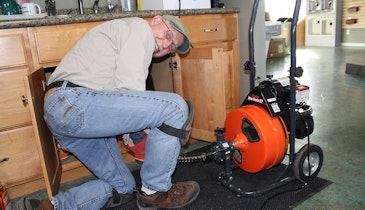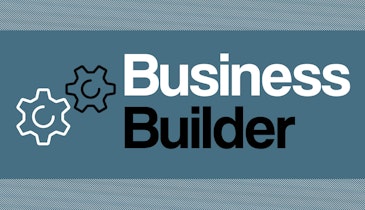Interested in Residential Plumbing?
Get Residential Plumbing articles, news and videos right in your inbox! Sign up now.
Residential Plumbing + Get AlertsPlumbing pros take pride in their work because they get to solve unique problems and showcase their craftsmanship every day. But what’s the best way to charge for your hard work, especially when every job is different and there are lots of unknown variables when you arrive at a customer’s house?
Though there’s no right answer, there are a few pricing models that can help you walk away from residential plumbing work with profit and happier customers no matter what you run into on the job site.
Flat-rate pricing
Some customers may prefer this pricing structure because they know costs up-front, but it does shift more risk to the installer if, say, the job requires more time and materials and you don’t factor in some flexibility. But sometimes selling skill rather than time is a better option. Some benefits of this pricing model include:
- Fewer cost surprises for customers. With flat-rate pricing, customers can learn the price in advance and then decide whether the job you’re offering is worth that value to them. With a time and materials pricing model that presents the bill at the end of the job, you may run the risk of upsetting a customer if the job takes longer than expected or the price you present at the end is more than they anticipated.
- Maintain a healthy profit. The cost of running a residential plumbing business — with all the required licensing, insurance and any warranties you may offer — has risen over the years and will continue to fluctuate in the future. With a flat-rate pricing model, you can charge what’s needed to stay in business and make a profit so you can continue to offer high-end services. That may be easier to do when you present your rate to customers as one fixed price rather than part of a breakdown of time and materials.
- Benefit from innovative plumbing technology. The more jobs, the better in this case. And just because efficiency is top of mind doesn’t mean you have to sacrifice quality. Plumbing technology like push-to-connect fittings can help you complete residential plumbing installations — both renovations and service and repair work — more quickly while maintaining a project that gives you and your customer peace of mind. Plus, when you get in and out, you minimize customer inconvenience and can complete more jobs in a day, upping your profit.
Hourly pricing
In this case, the customer has more at stake than you do, but one way you can help put them at ease is to keep them updated about their bill frequently. For contractors, this pricing model has a few benefits:
- Provides customers context for your craftsmanship. Flat rates based on national averages can come off as expensive for customers who only see the dollar amount without context, especially when they may have the preconceived notion that a plumbing problem is just a YouTube video away from fixing. Hourly pricing gives you the opportunity to explain the issue and outline the time and craft it’ll take to resolve it, ultimately helping them understand why you’re charging a certain amount for your skill.
- Allows for more attention to detail. With fixed rates, a contractor may be more inclined to get the job done as soon as possible to the point that they don’t pay enough attention to the quality of their work. With hourly rates, your team may feel less pressure to race against the clock, which can allow them to focus on a job well done and minimize installation errors from rushing. It can also give you or your team more time to evaluate whether the plumbing system has any other problems that need servicing, which can help boost your profit.
- More flexible for installers. You can’t predict everything. If you find that you need more time or materials than you originally anticipated to complete a repair or project, you could end up losing money if you charge a flat fee up front. Hourly pricing for residential plumbing services better allows you to be nimble in case of surprises or if things don’t go according to plan. In fact, some plumbers even price in an additional hour or two into their hourly rate for built-in leeway.
- Can seem fairer for some jobs. For quick service and repair plumbing work, a flat rate can sometimes seem steep if you wrap up in an hour, for example. A time and materials rate, in this case, may better reflect the exact cost of the job.
The hybrid model
You may decide you benefit from aspects of both of these pricing strategies for your plumbing work. You’re not alone. A hybrid pricing structure can cut down on the time you spend estimating and sending proposals while also giving clients an at-a-glance look at the value of the job. This reliability, transparency and consistency can in turn increase customer confidence. Mixing and matching pricing types can take a few forms:
Based on complexity of service
Some pros charge flat fees for smaller, more predictable services, such as drain clogs and residential leak repairs. Then, for larger, more intricate jobs, they charge by the hour. Others may do the inverse, using a time and materials rate for all plumbing service repair calls up to a certain dollar amount, such as $1,000. However, if that same service call turns in to a fixture replacement, they may go to a type of fixed rate. Some plumbers charge per fixture when quoting any fixture replacement jobs, remodels or new construction.
Both options give you flexibility. If you go in for a simple repair, for instance, and find a larger plumbing problem, each situation is billed appropriately according to the attention it requires.
Based on large chunks of time
Another option is to charge by the half day or full day. This gives customers a better idea of what they’re expected to pay, and you can easily keep track of costs and take the appropriate time needed to complete the job to your standards.
The bottom line
No matter which pricing option you choose for your residential plumbing services, one thing pros say keeps them covered and their customers happy is communication. Having an initial proposal, conversation about cost up-front, or pricing updates in stages minimizes surprises for your customers, which helps you build trust with them. Explaining your processes — from how you evaluate a problem to the way you proceed if you find additional issues — also helps you build credibility and provides you with the flexibility to charge what you need to depending on what you encounter on the job site.
Discover residential plumbing solutions that help you work faster and better.
Visit the SharkBite Storefront






